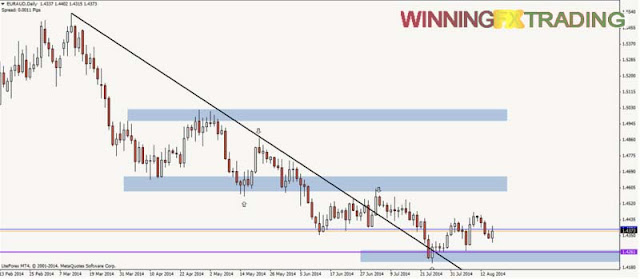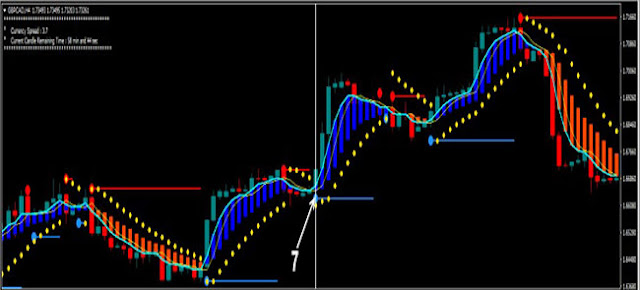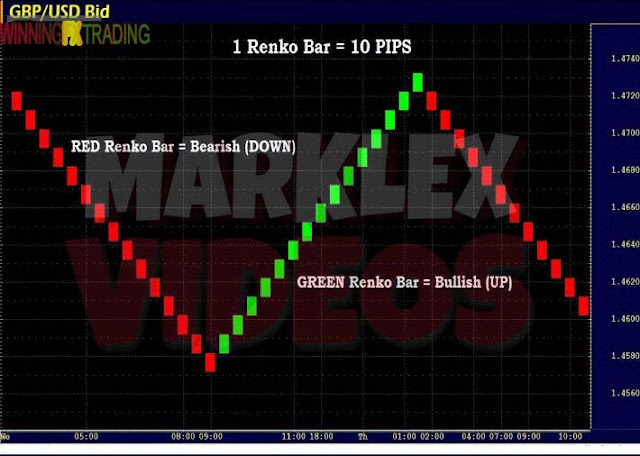RECOMMENDED BROKERS
FINMAX - INTAFOREX - FXCHOICE - OLYMPTRADE - XM - ZULUTRADE
This is where things go crazy!
FINMAX - INTAFOREX - FXCHOICE - OLYMPTRADE - XM - ZULUTRADE
This is where things go crazy!
Not really, actually this is the simplest part of the whole method. Albert Einstein once said: "Make things as simple as possible, but not simpler", and for this, here is a good way to identify if a market is in a trend.
Use two exponential moving averages:
21 EMA
55 EMA
When the 21 EMA is above 55 EMA, the trend has gone up.
When the 21 EMA is below the EMA 55, the trend is downward.
This is the definition of a trend, but it is where we started.
Keeping my graphics clean and comfortable. Usually, I like to see you.
For that reason, colors 21 and 55 of EMA are gray to blend with the white background of my graphics to a certain extent. On a black background, my preference would be a darker gray color for EMAs.
Below is an example of how my chart looks with the 21 and the 55 EMA
The lighter gray color on the white table does not become overwhelming and distracting, and this is important to keep in mind. As we operate with FMM, we will perform operations that occasionally go through the lines, and other times we will use the lines as objectives and as areas of support and resistance.
I do not want you to get too distracted with the lines, and having them subdued is a way of keeping them in the background. They are there when we need then and quiet when we do not need it.
Why the 21 and 55 EMAs?
You can experiment with other settings to your liking. The 13 and 21 are common for moving averages. During many tests, I have found that 21 and 55 are the most reliable to determine a trend. They are slow enough to determine when a real trend has legs, but fast enough not to delay the change of a long trend.
When looking at a graph with the 21 and the 55 EMA, you will see that these two MAs are extremely strong levels of dynamic support and resistance, and this element causes these large MAs to follow the trend.
The price never deviates too long before returning to the 21 EMA and then to the 55 EMA.
This is an important aspect to counteract trend trade, the price moves away from the moving averages, but will return very quickly to these levels. And because of the excellent ability to provide support and resistance, these moving averages are also incredible targets.
The 21 and the 55 EMA work in all periods, from the minute to the monthly. This simplifies things too, by not having to look at different MAs for different time frames, and as you know, simple is good!
Feel free to try out your own configuration, experiment with many combinations, with exponential and simple, or a combination of the two, you can find something that you feel works best for you. Either way, the following pages will show you how to use them
21 EMA and 55 EMA as support:
21 EMA and 55 EMA as resistance:
Even though the 21 and the 55 are large areas of support and resistance, they are also excellent to return the price. This concept alone makes these moving averages large targets in counter-trend operations.
Below is an example of gold (AU). Lately, gold has been in an incredible trend, and as you can see clearly, moving averages have provided excellent support as the price has risen, but at the same time, gold prices have always returned to moving averages.
Seeing the MA as support, resistance and objectives opens a new world of commercial possibilities!
In the next post we will show you how to confarm and follow the trend.




















































